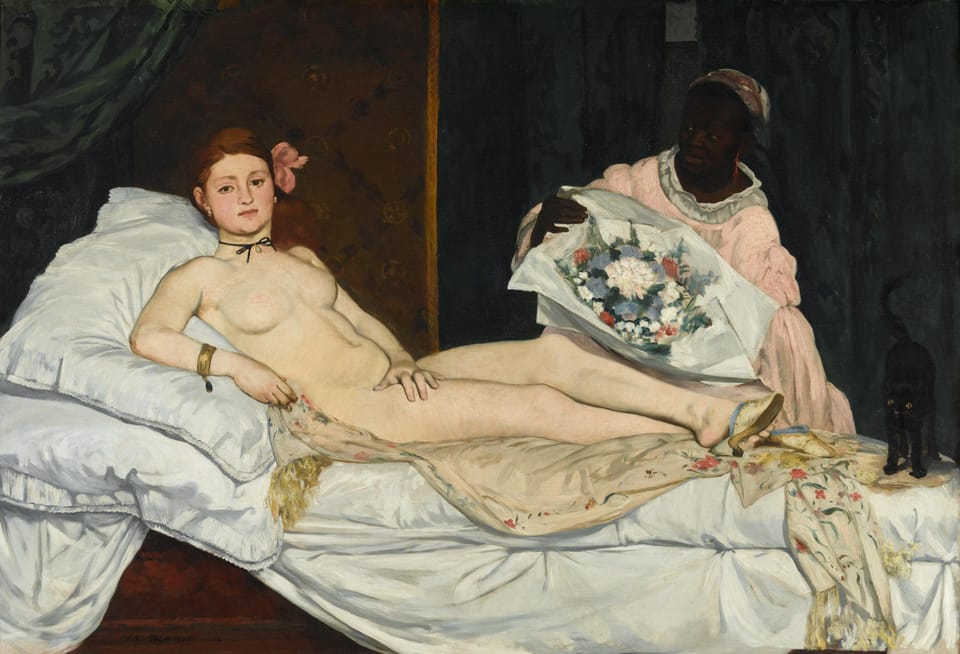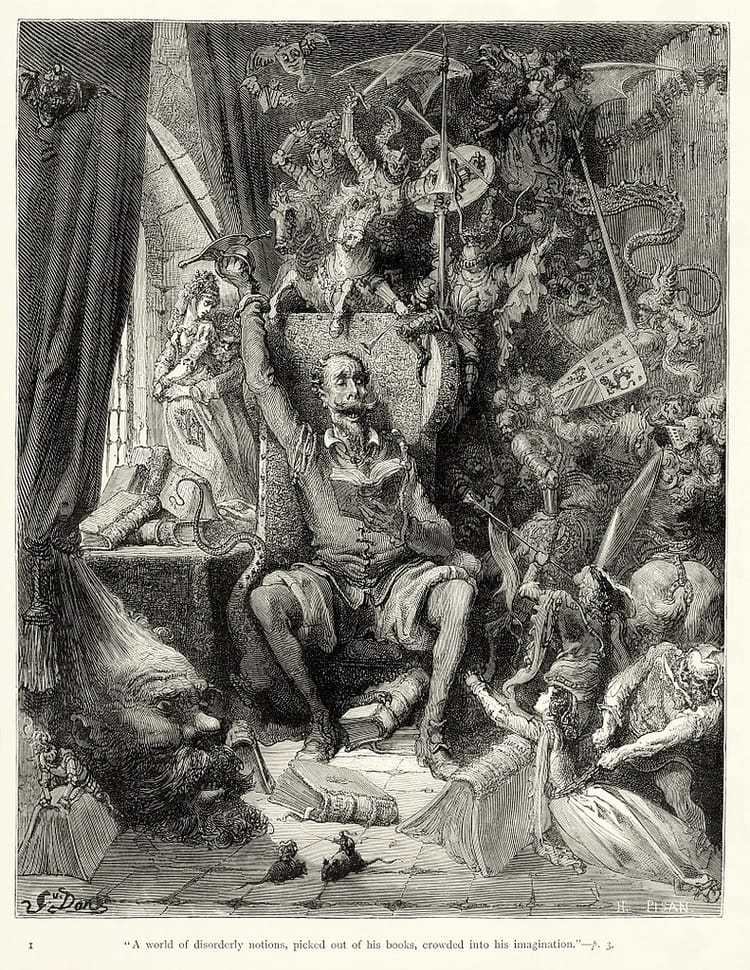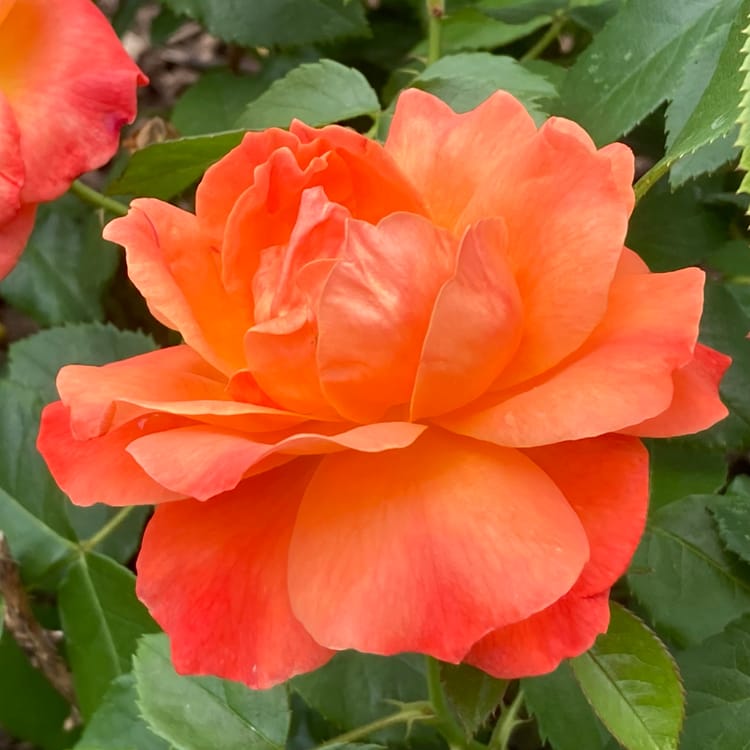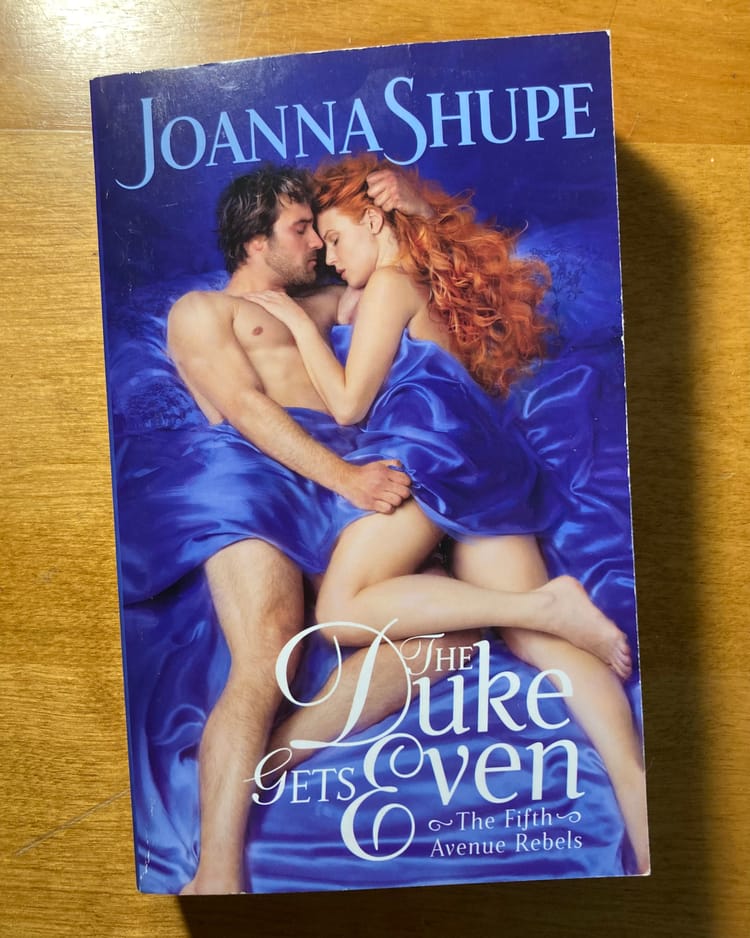on looking, part 1

The plan was to see Manet/Degas between Christmas and the New Year, but instead I got sick, so we did not get to the Met until the very last day of the show. For the second time in my life I stood and looked at Olympia, this time for maybe twenty or twenty-five minutes, which felt like a very long time, but isn’t long at all. I was reminded first of all about the cat standing at the end of the bed. I wondered about the expression on Laure’s face. Is she smiling? I looked and looked into Victorine’s slightly lopsided eyes. I wondered about the space in which the two models are situated—are the green drapes on the left to the front of Victorine or behind her? What lies beyond the drapes behind Laure? I always forget that Victorine’s hair is long and loose, resting behind her left shoulder, and not tied back. The toes of her right foot peek out behind her left slipper.
Years ago, when I was in training to become a teacher, a supervisor came to observe my student teaching. A veteran of New York City public schools, she didn’t think much of the progressive school where I was teaching—nor, most likely, of my efforts at teaching, though she saw that I was doing the best I could. I often think of one sentence she uttered in the husky voice of a lifelong smoker; describing my tenth-grade students, she said, “Their eyes caress the words, and they think that they are reading.”
In my memory, this supervisor looks something like Maxine Greene, whose course on aesthetics and education I had taken the previous year. In one lecture, she cited how little time people spend actually looking at a work of art. I don’t remember the number Dr. Green gave; at Artsy, Isaac Kaplan writes, “The exact numbers vary, but studies have determined that the average time a person spends gandering at a piece in a museum is between 15 seconds and 30 seconds.” Their eyes caress the painting, and they think that they are seeing it.
Since then, I have made a practice of looking at a work of art until I think that I am bored, and then I keep on looking. Maybe I notice something different, or new; maybe I don’t. Either way, it doesn’t matter. The point is the practice. I want to know how to look without searching or grasping—for meaning, for transcendence, whatever. I want to know how simply to receive the work.
A few summers ago, responding to someone’s question about what’s on our bucket lists, I said that I want to travel just to look at art, and then I remembered that I don’t have to travel so far to look at art—a trip on the Q train plus a bit of a walk gets me to the Brooklyn Museum or to MoMA or to the Museum Mile. I could become intimate again with my favorite works in the city, as I was when I first moved here. But life gets busy and complicated, and other plans get in the way, or I simply forget what I had wanted to do. Though at some point I knew that Olympia was coming to New York, by the time it was here, I had forgotten. I wish I had remembered; I wish I had spent more time with all those paintings that came here from across the ocean, just so that I could look at them and look at them and look at them without the anxiety of trying to see as much of them as I could all at once, because who knows when I’ll get to Paris again—it’s been so, so long.



